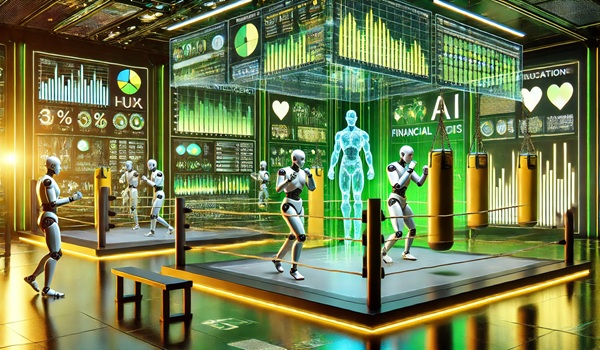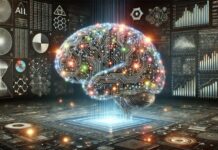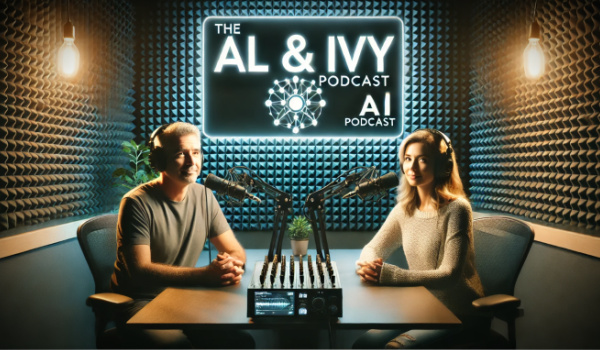Each week we find a new topic for our readers to learn about in our AI Education column.
Today on AI Education I’m going to start by talking about “the underpants gnomes.”
I’ll go ahead and date myself here—as a teenager, I was an early fan of South Park, and because I found the show early, I watched the show’s first seasons pretty much as they were broadcast.
It’s been a while since I’ve dipped a ladel into the South Park well, but one episode concerned the aforementioned underpants gnomes, who ran around South Park in the middle of the night taking underpants right out of residents’ dressers as they slept, like little grinches, but of the undergarment variety. They had a business plan:
- Phase 1: Collect Underpants
- Phase 2: ?
- Phase 3: Profit
Okay, so where does artificial intelligence come in? The gnomes have become kind of a cultural shorthand for unexplained processes, and many such processes exist in the AI universe, in particular, AI training. To me, AI is just software with some ability to learn reason and to learn to make decisions autonomously—the “AI” that we use day-to-day is actually better described as AI models built upon this software. In between AI and an AI model is “training.”
In the spirit of our introduction, here’s the “underpants gnomes” definition of AI training:
- Phase 1: Collect data
- Phase 2: ?
- Phase 3: AI makes your life better.
What Is AI Training?
In case you’re wondering, the “how we got here” this week is my own curiosity. We’ve approached the topic in some of our writings about AI models and AI agents, but it’s a difficult topic to research because there are often black boxes around how institutions train their AI.
Think about our underpants gnomes definition. You have software that is capable of learning over time, and you have a mound of relevant information from which it can learn. How do you get your software to do something useful with that data, and then use what it has learned to understand and manipulate additional input in the future?
You train it! Here’s where switching metaphors might work in our favor. Say you want to create an image recognition program using AI, and you want that program to be able to identify images of a stop sign. You could show that program images of stop signs appropriately labled as stop signs, and images without stop signs labeled as without stop signs. Then, you could show it unlabeled images and ask the program to tell you whether those images have stop signs or not. Each time the program responds with a wrong answer, it is adjusted until it is able to make accurate decisions. The process is not unlike a mathematical process called curve fitting.
Curve fitting is an age-old geometrical, mathematical and scientific problem—when we create a set of data through observation, and then plot that data visually on a graph, it’s usually impossible to perfectly describe that data with a mathematical formula. The best we can do is approximate a curve to fit those data points. When we’re training an AI model, we’re asking the AI to do the same kind of approximation. The margin of error between approximation and reality is one of the spaces where AI hallucinations can occur.
Types of AI Training
Supervised learning—An AI is given labelled data to learn on, and is expected to learn how to produce accurate labels for unlabelled data after being trained.
Unsupervised learning—An AI is given unlabelled data and is expected to find patterns within the data on its own, without any intermediation.
Reinforcement Learning—rather than using a static data set, reinforcement learning teaches the model as it goes, rewarding it for “good” decisions like a puppy.
Steps to AI Training
But AI training goes beyond just teaching artificial intelligence to make good approximations. There are six steps to training an AI model:
- Gather data—AI training data can come from an institution’s legacy data. It may be synthetic data manufactured for the purpose of training AI models. It could be actual user data, gathered in real time. It can be text, speech, images, video or sensor data. It can be labelled and tagged with information about what it contains, or it can be entirely unlabeled.
- Clean, process and split data—Prepare the data so that the AI can be trained on it. This should also involve splitting the data into training, validation and testing data that will be used in different stages of the training process.
- Design neural networks/transformer architecture and choose a training model—This is where your software meets hardware, like AI chips, that can sift through huge amounts of data, repetitively, very quickly. This is also where you select or create algorithms that allow the transformer to explore your data. Combining your training data with the algorithms creates an AI model.
- Fine-tune your model—this really just means that the model needs to continue to be trained. This is a largely automated process, but at some points it is still helpful to bring in human feedback—this is where reinforcement learning can be used to put the finishing touches on an AI model, including creating user-friendly ways to interface with it.
- Validate your model—It’s not enough to fine-tune the model, experts need to challenge it to make sure it creates reliable, explainable results.
- Test the model—Use new or live data to demonstrate the model’s performance and accuracy.
Where Training Can Go Wrong
Training isn’t always successful—sometimes, artificial intelligence models are overfitted, meaning that instead of learning how to make decisions based on their experience with data, the software just memorizes the data and thus has difficulty applying anything it has learned to a new data set. In underfitting, the AI model fails to find some of the patterns and structures in its training data and, as a result, is unable to make accurate inferences. Strong validation and testing practices can help avoid the use of overfitted and underfitted models.
Of course, AI training is also an opportunity to introduce bias into AI models, starting with the selection of data, but also extending to poor choices during the validation and testing stages of the process.







